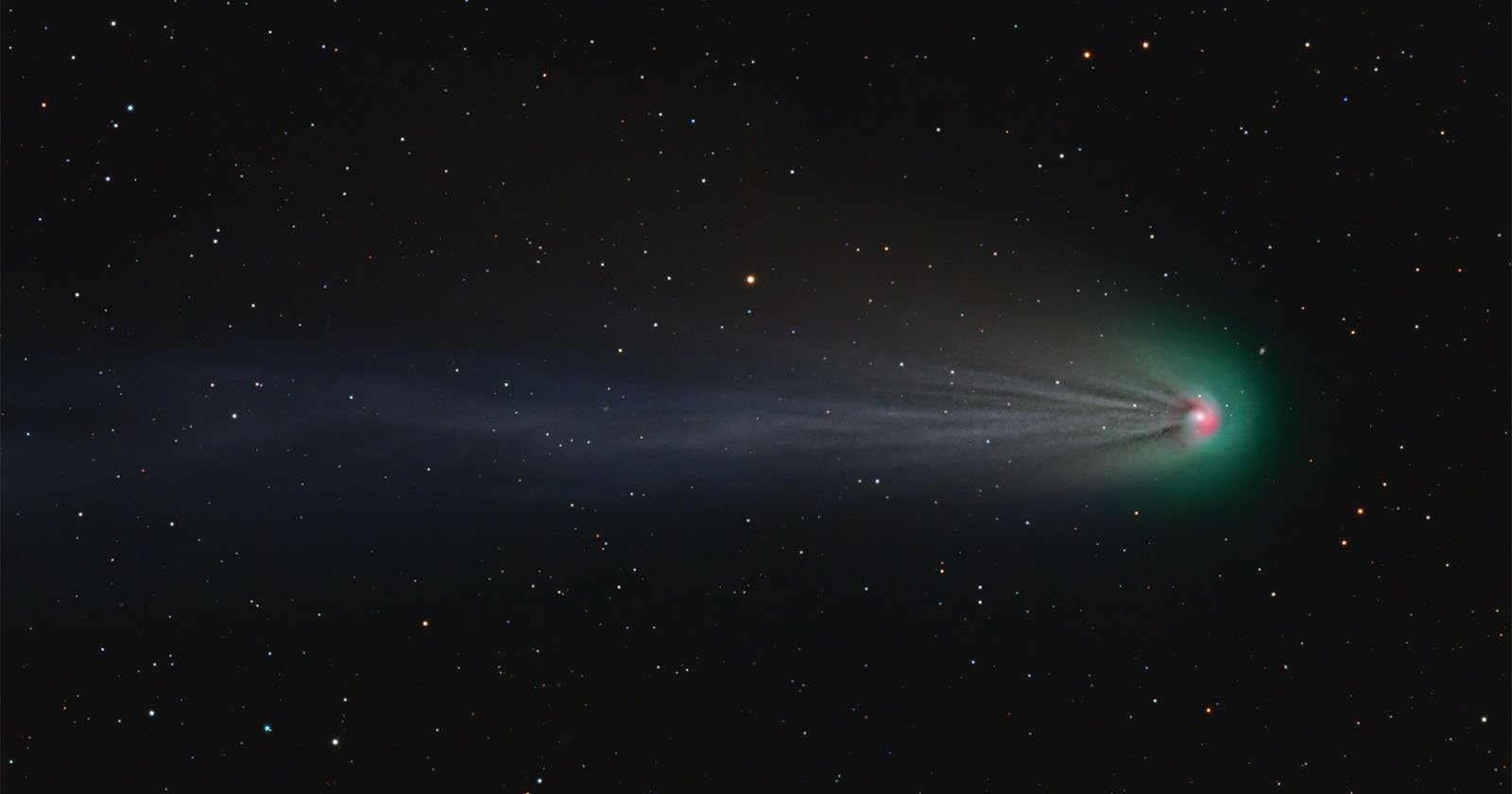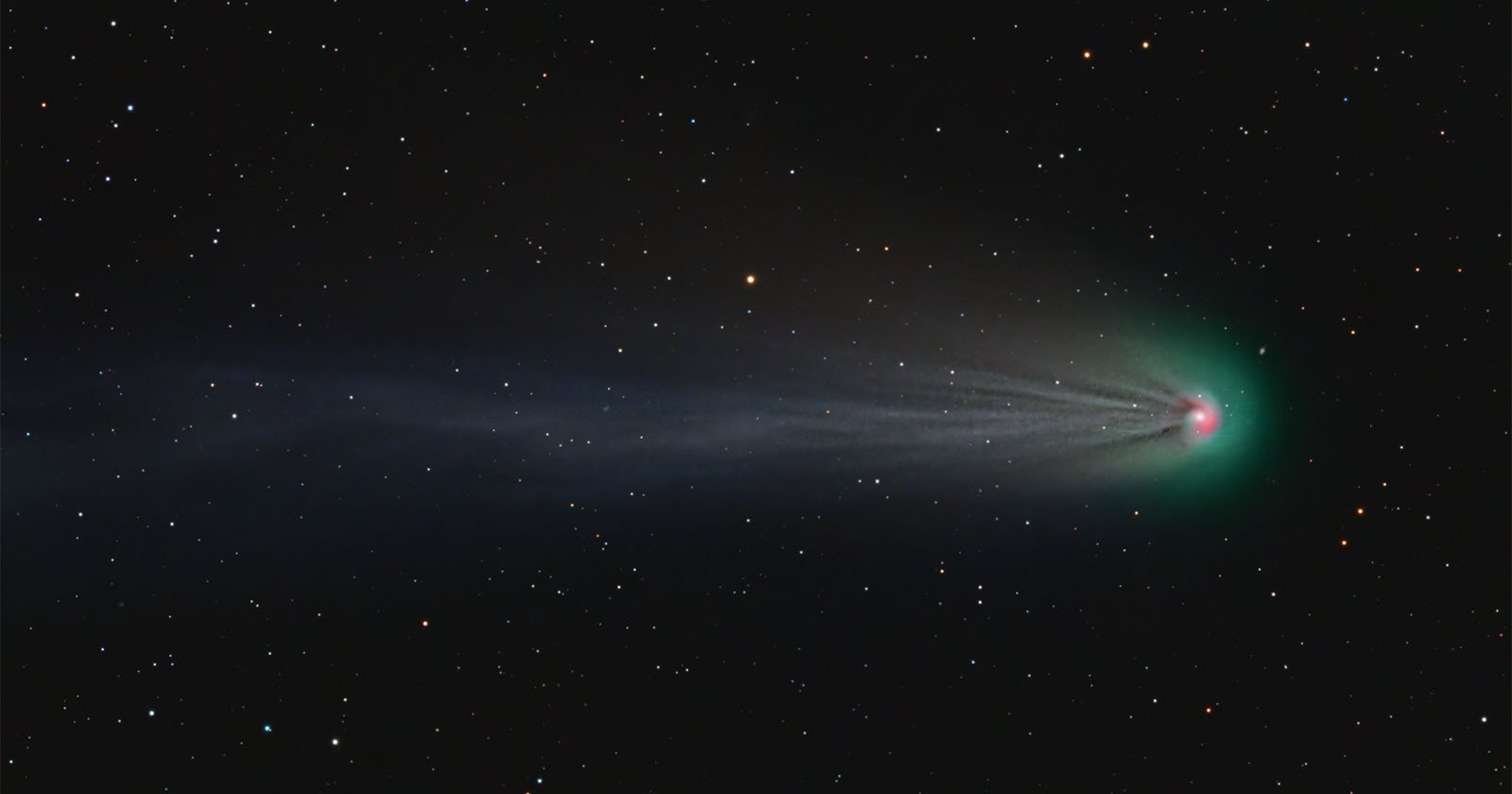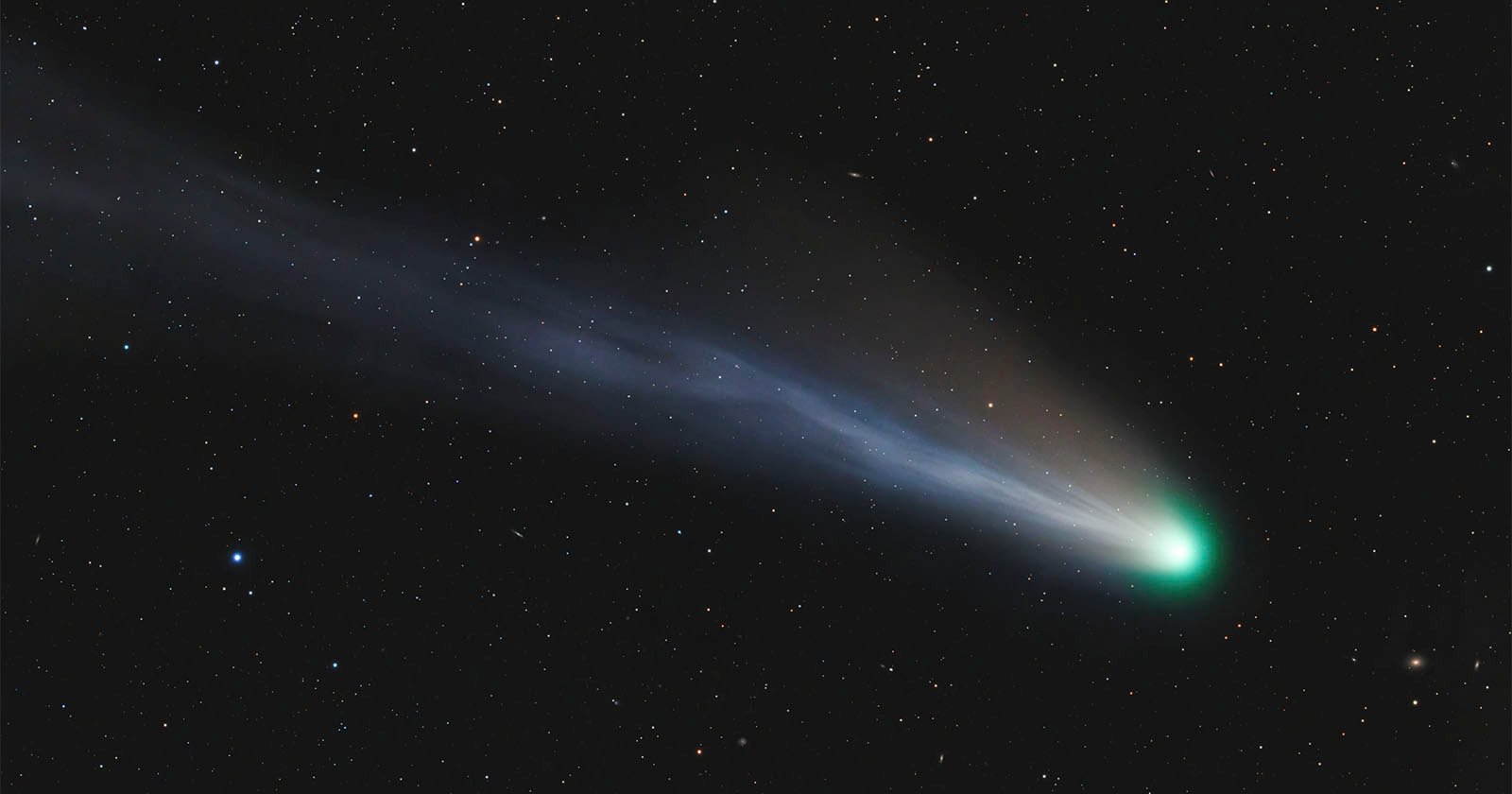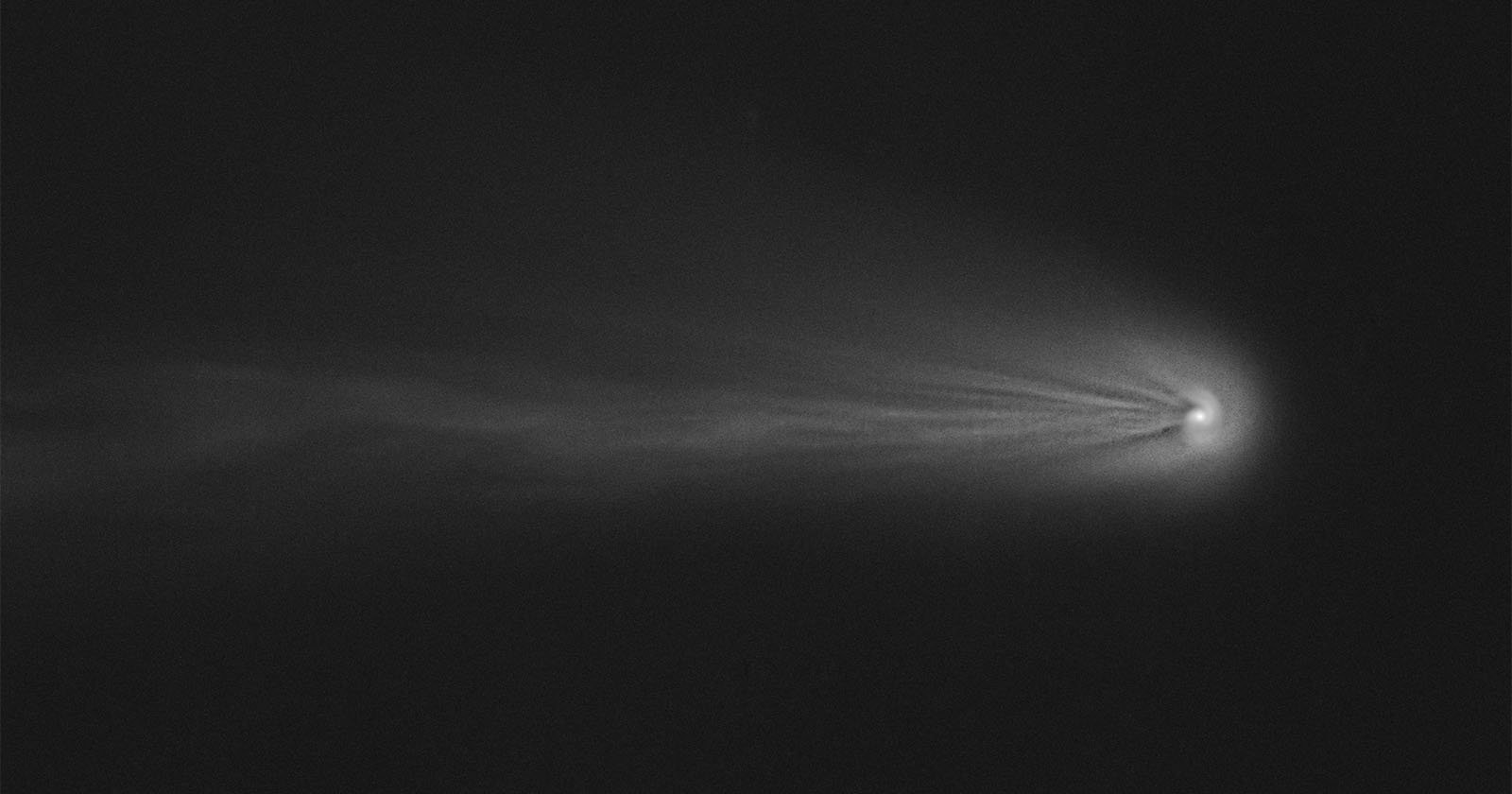

Norwegian astrophotographer Jan Erik Vallestad captured beautifully detailed photos of the city-sized comet 12P and, thanks to special image processing techniques, revealed a fantastic spiral formation surrounding the comet.
12P, also known as Pons-Brooks after its 1812 discoverer Jean-Louis Pons and William Robert Brooks, who studied it further in 1883 during its subsequent appearance. Like other comets with orbital periods between 20 and 200 years, 12P is a Halley-type comet. 12P is among the brightest of all known periodic comets, with an absolute visual magnitude of about five.
When Vallestad originally photographed the comet on March 9th, it had a lovely green glow and bluish tail as it headed toward the Sun. As it gets closer to the Sun, its coma has become easier to see. It glows green thanks to its high levels of dicarbon, Space explains.

However, a spectacular spiral shape is hidden in the green glow, which Vallestad uncovered using special image processing. Fellow astrophotographer Juris Seņņikovs of Latvia achieved similar results by following Vallestad’s lead with image processing. Seņņikovs’ image was also featured on SpaceWeather.com.
Vallestad tells SpaceWeather that he processed his image in the specialized astrophotography software Pixinsight to stretch the tonal ranges in his image and reveal otherwise hidden colors and details.
“This is doable because the core itself was not ‘blown out’ (saturated) in my original data,” the photographer told SpaceWeather.

This isn’t just a byproduct of some post-processing artifact, either. Other astronomers aside from Vallestad and Seņņikovs have also seen the spiral both in 12P and other comets.
The fascinating spiral shape is “likely caused by small geysers on 12P’s surface, which are pumping out streams of cryomagma,” says Space, adding that when the comet spins, the “icy jets” spin and swirl, which are seen in the processed photos. The material vented by the comet would naturally spiral due to the 12P’s spin.
Comet 12P continues to speed through the inner solar system at around 40,000 miles per hour (64,500 kilometers per hour). It will reach its closest point to the Sun on April 24th and catapult around the star before returning to the outer solar system. The comet’s closest approach to Earth will be on June 2nd when skywatchers can see the comet with the naked eye. There are plenty more opportunities on the horizon.
Vallestad is an incredible astrophotographer, as evidenced by his images featured in this article. To see many more of his photos, follow him on Instagram and check out his profile at Astrobin.
Image credits: Jan Erik Vallestad (Instagram / Astrobin)






